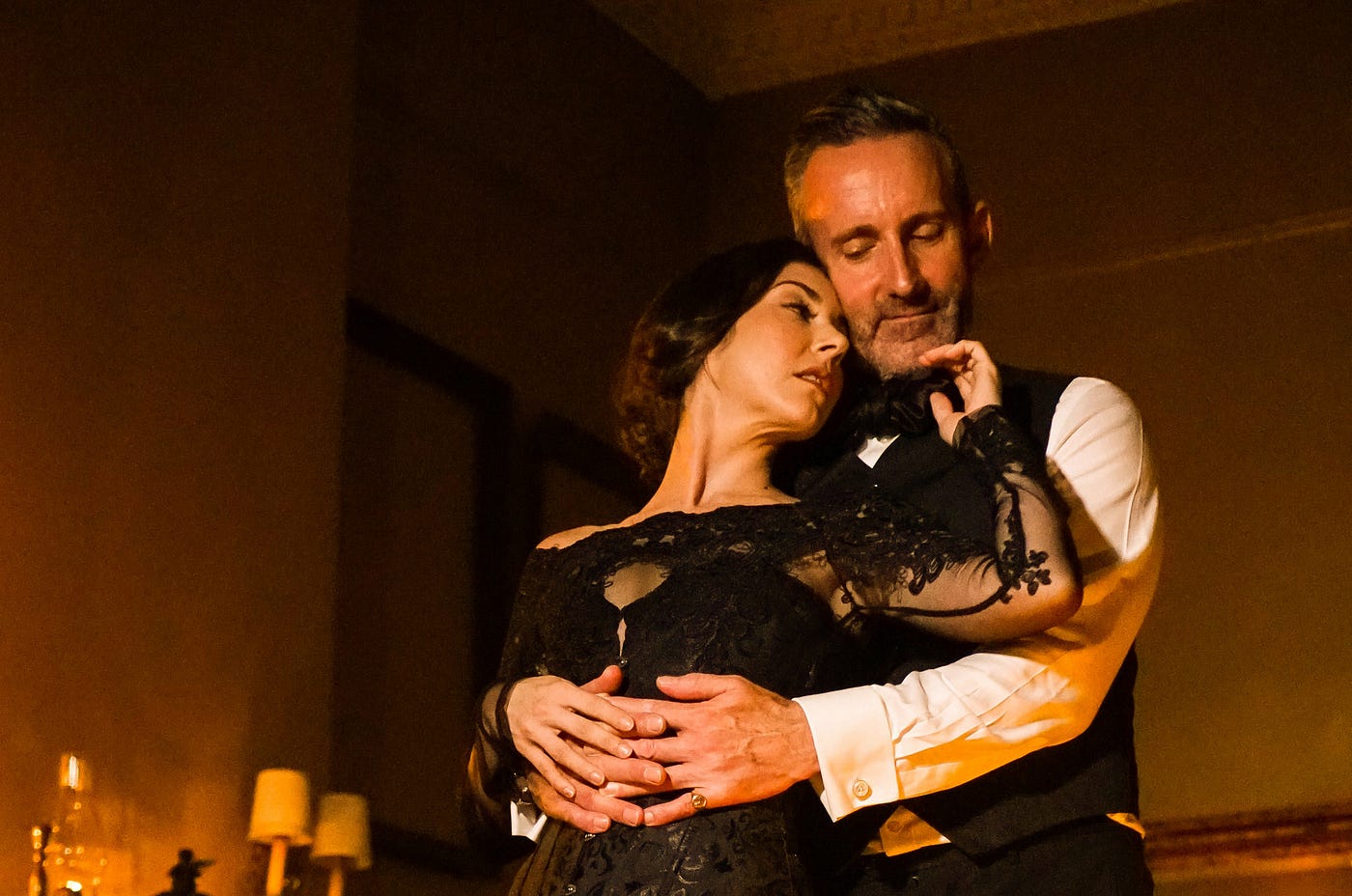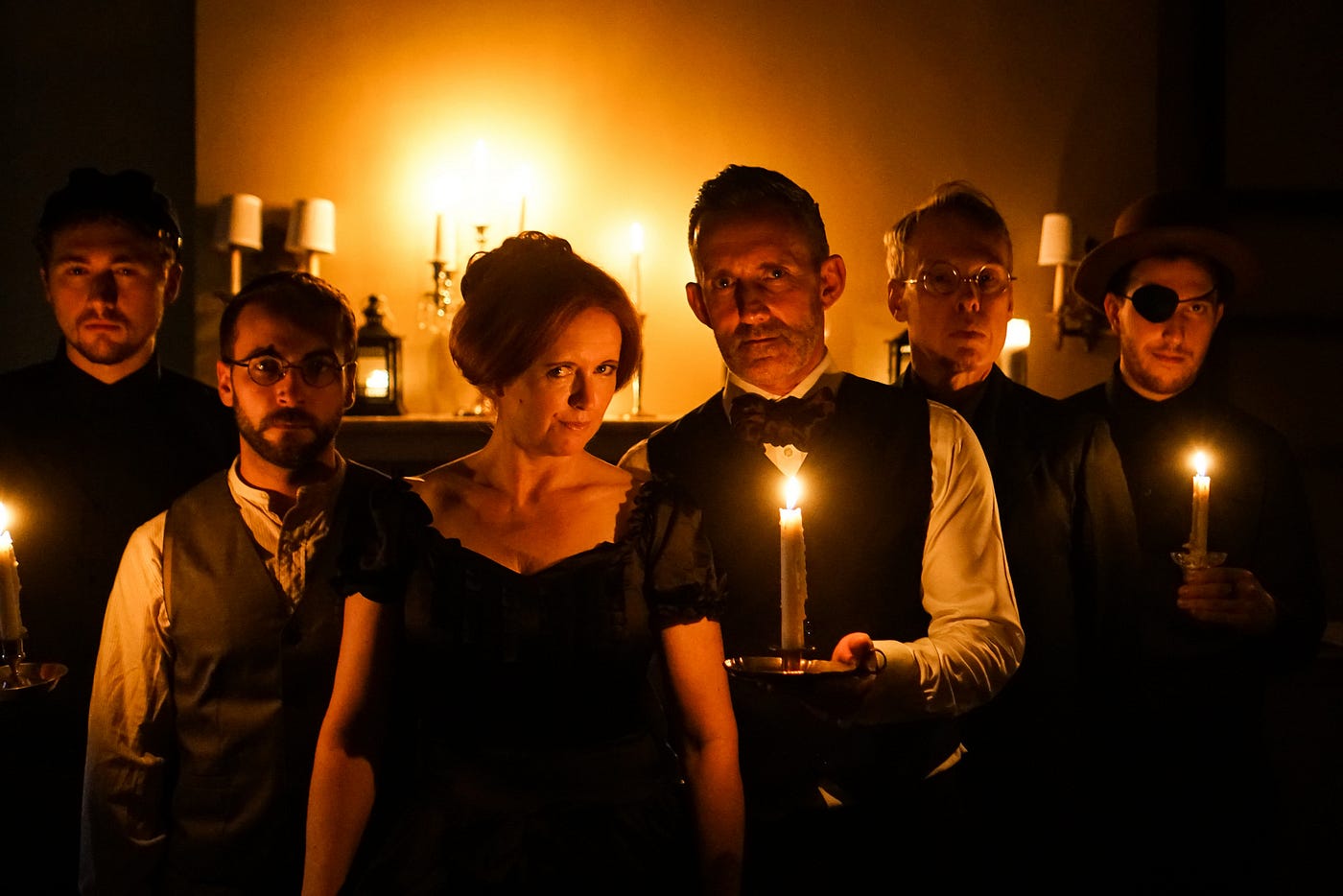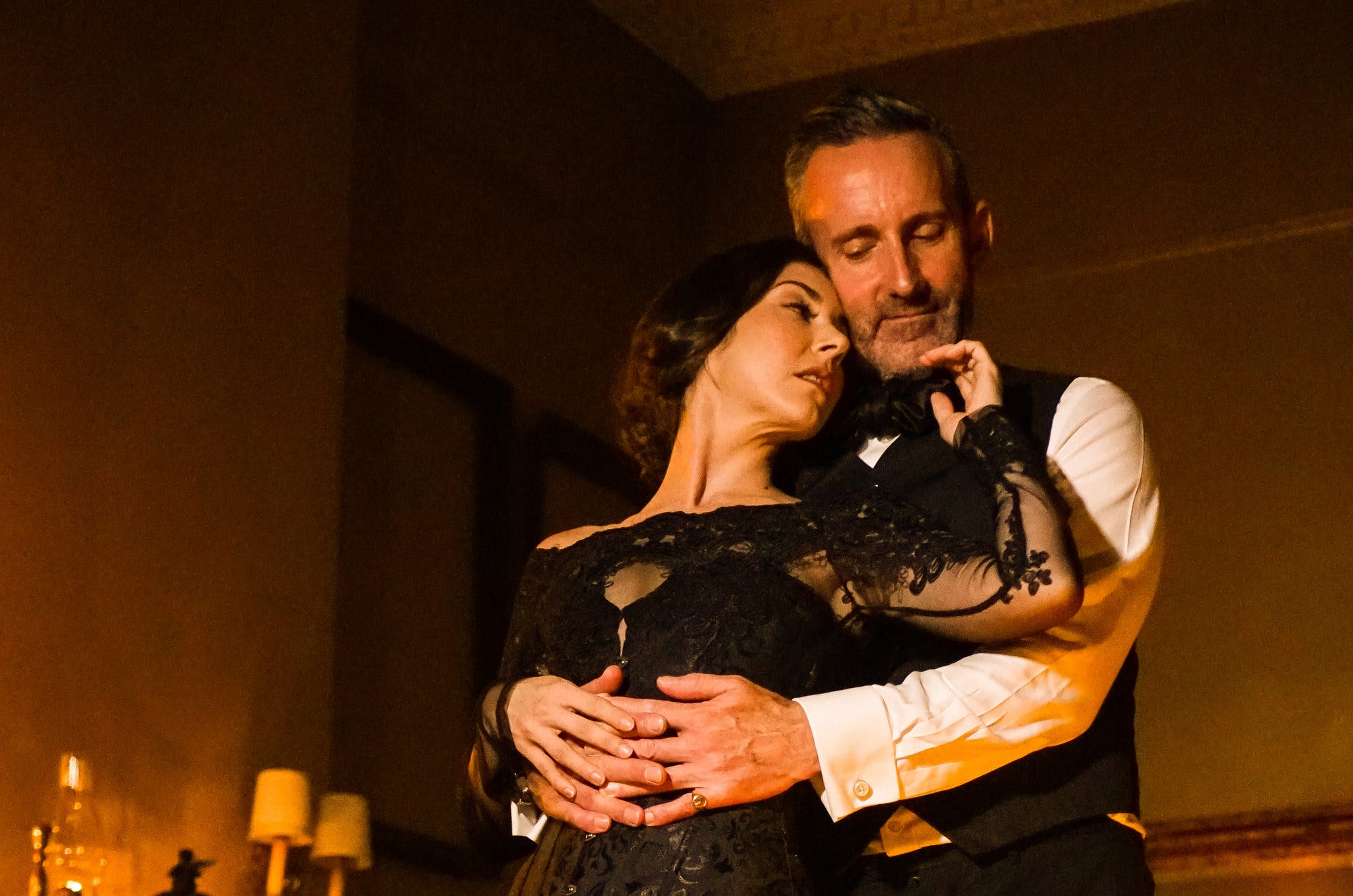
Conducting a seancé in a historic parlor to find out what really happened to Harvey Burdell
I’m standing on the sidewalk outside a drugstore on a breezy Friday evening, in the East Village holding a small metal lantern. There’s a large group of people following a woman named Charlotte for a seancé. And not just any old seancé.
We’re looking into a murder.
And not just any murder, but an unsolved kiling from 1857, wherein a quite charming and handsome Mr. Harvey Burdell (played by Philip O’Gorman), a wealthy dentist of some note, was found stabbed fifteen times in his own home and all eyes turned upon his on-again-off-again relationship with a certain Emma Cunningham (Elise Gainer), who claimed to be his wife…his secret wife.
We’re soon met on the sidewalk by the lovely medium Minnie Seymour (Lindsey Zelli), though she looks a bit pale and claims to have lost her voice. She ushers us down the street with the worried Charlotte (Hannah Roze), but becomes woozy for a moment, and then recomposes herself with Charlotte’s help.
After a lovely little history lesson and some basic onboarding from the pair of women on the sidewalk, we head inside the historic building (built in the 1830s) and up the stairs. We enter a small, but atmospheric room filled with dropcloths and assorted bric-a-brac that is our supposed abandoned parlot room. I try to mind the large blood stain on the floor, as I carefully place my flickering lantern on the window ledge.
It’s a bit crowded, as all of us cram into this tiny, dark room. The group stands around the perimeters and we all link together by placing one hand on the shoulder of the person next to us. We form a magical circle to summon the spirits during our time there. We breathe in unison and we chant, as Minnie’s direction.
The spirits seem to be close; the division between our two worlds feels flimsy, she reports.
Now, it’s time for the seancé to begin.
And, of course, that’s when the lady next to me shrieked.
I turned to find that she held a thick hardbound book in her hand; one that she’d just picked up from a chair. Something had fallen out of the book.We looked down at the unusually shaped object on the carpet next to her.
It seemed innocent: a butterfly.
“Oh, no, that’s a good omen, it means the spirits are nearby,” counseled Charlotte, after the color had returned to our faces.
Get Kathryn Yu’s stories in your inbox
Join Medium for free to get updates from this writer.
SubscribeSubscribe
We all took a deep breath and sat down.

From there, The Bloody Deed of 1857 settles into what is essentially theatre in the round, something reminiscent of the recently closed production of Sweeney Todd nearby. As the medium attempts to make contact with the other side, we are plunged into darkness and hear rustling sounds all around us that eventually turn into the grunts and thuds of a bloody murder happening in the middle of the room. When the lights come back on, we find ourselves in a purgatory of sorts, with Emma and Harvey, as they try to ascertain where they are, when they are, and why the room appears to be locked from the outside.
This all leads up to the accusation that Emma is in fact the person who murdered Harvey, despite being acquitted by a jury of her peers; of course, in Purgatory, it’s hard to assemble said jury of her peers, so, we the audience, are conscripted into that role, as a mysterious bespectacled man walks us through the proceedings of the court base against Ms. Cunningham. The spirits of the prosecution and the defense are summoned from the great beyond to carry out this case, calling a multitude of witnesses (played with great flexibility by a “shadow” ensemble, some taking up to six different roles) as they see fit.
Witness after witness is called to the stand, but not always to tell the truth, the whole truth, and nothing but the truth. As Emma and Harvey observe, they sometimes mutter to themselves or give a quick aside to the people sitting nearby. We, as ghostly observers, are also privy to scenes regarding the true nature of who said what on the stand and why they might be lying. The trial is long and grueling; it is here where the ambition of The Bloody Deed of 1857 falters.

We are treated to indiscretion after indiscretion by the main characters, as the somewhat grating Emma pleads her case to Harvey, denying that she was the murderer.
And after one too many shocking revelations (infidelity, sexual assault, abortion, sexual favors, more infidelity, a dalliance with one’s cousin, and the list goes on), I longed for a space to stop and reflect, or simply catch my breath and take a break. And I questioned the need to literally re-enact some of the brutal acts the characters commit, even if only hinted at behind draped sheets.
The production keeps up its marathon pace as the script calls for numerous short scenes with different sets of characters, sometimes lasting only a few minutes; while I applaud the stamina of the cast and crew for keeping up, I felt as if I had a bit of whiplash by the end and wanted someone — anyone — to confess to the killing. But there is a point where an audience simply becomes numb to what is happening in front of them, particularly when it’s at such close range.
However, in this intimate, up-close setting, there is also a certain magic in seeing theatre tricks executed seamlessly. The toolkit of many an off-off-Broadway production is used to great effect here. The vast majority of the lighting is done via live flame and the occasional flashlight, held by a member of the ensemble to maximize the creepiness of the shadows the beam casts. Quick, silent costume changes — of which there are many — are done in the dark corners of the small room, mere feet away from the audience, as the main action continues. And as many resource-strapped theatre-makers have discovered in the past, there is a lot to be said about leaving the empty spaces to the audience’s imagination, enhanced by darkness and the right sound effects and music, particularly when our imaginations are left to run wild in an old, historic parlor room.
A bell rings by an unseen hand. Heavy footsteps are heard in the hallway, but no one is there. Cast members appear out of nowhere and disappear just as easily.
So even if the case of Harvey Burdell’s murder may never truly be solved, indeed, I did feel that the spirits were close at hand, that cool autumn night.
Just so long as they don’t get too close.
The Bloody Deed of 1857 continues through November 3, just off Astor Place in Manhattan. Tickets are $99 — 120 (includes an hour tour of the neighborhood’s ghostly sites including a visit to the murder location OR a voucher good for a Ghosts, Murder & Mayhem Walking Tour). Content includes mature themes, violence, sex, simulated sexual assault, references to abortion and gay conversion therapy, live flame, and moments of darkness.
NoPro is a labor of love made possible by:

…and our generous Patreon backers: join them today!
In addition to the No Proscenium web site, our podcast, and our newsletters, you can find NoPro on Twitter, Facebook, YouTube, Instagram, in the Facebook community Everything Immersive, and on our Slack forum.















Discussion